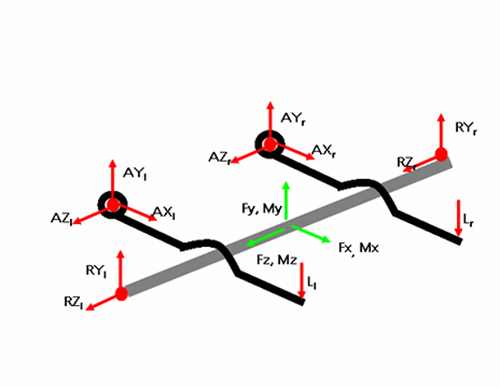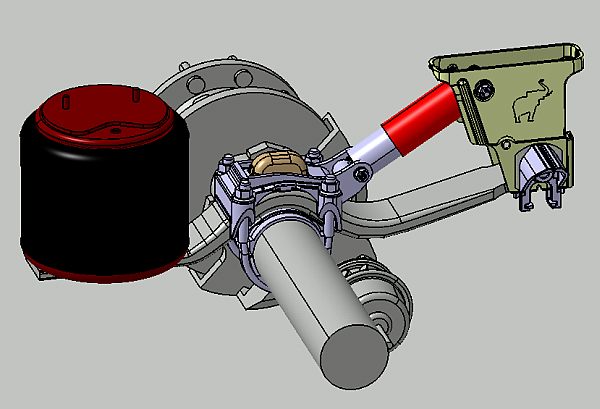An essential prerequisite to ensure correct stress-related dimensioning of components is having knowledge of the cutting stresses on the component. In many cases, multi-body simulation (MBS) in some combination with finite element methods (FEM) is the only method that can be used with reasonable effort to determine these stresses.
Depending on the application, the excitation of the system can be defined, for example, by certain motion sequences or the excitation can be derived from real vehicle measurement data in order to calculate the unknown variables.
In this case, importance is given to the adequate and accurate modeling of the attributes of the major force coupling elements, which is why for example, in the commercial vehicle sector, modeling plays such a key role in the design of pneumatic shock absorbers.


